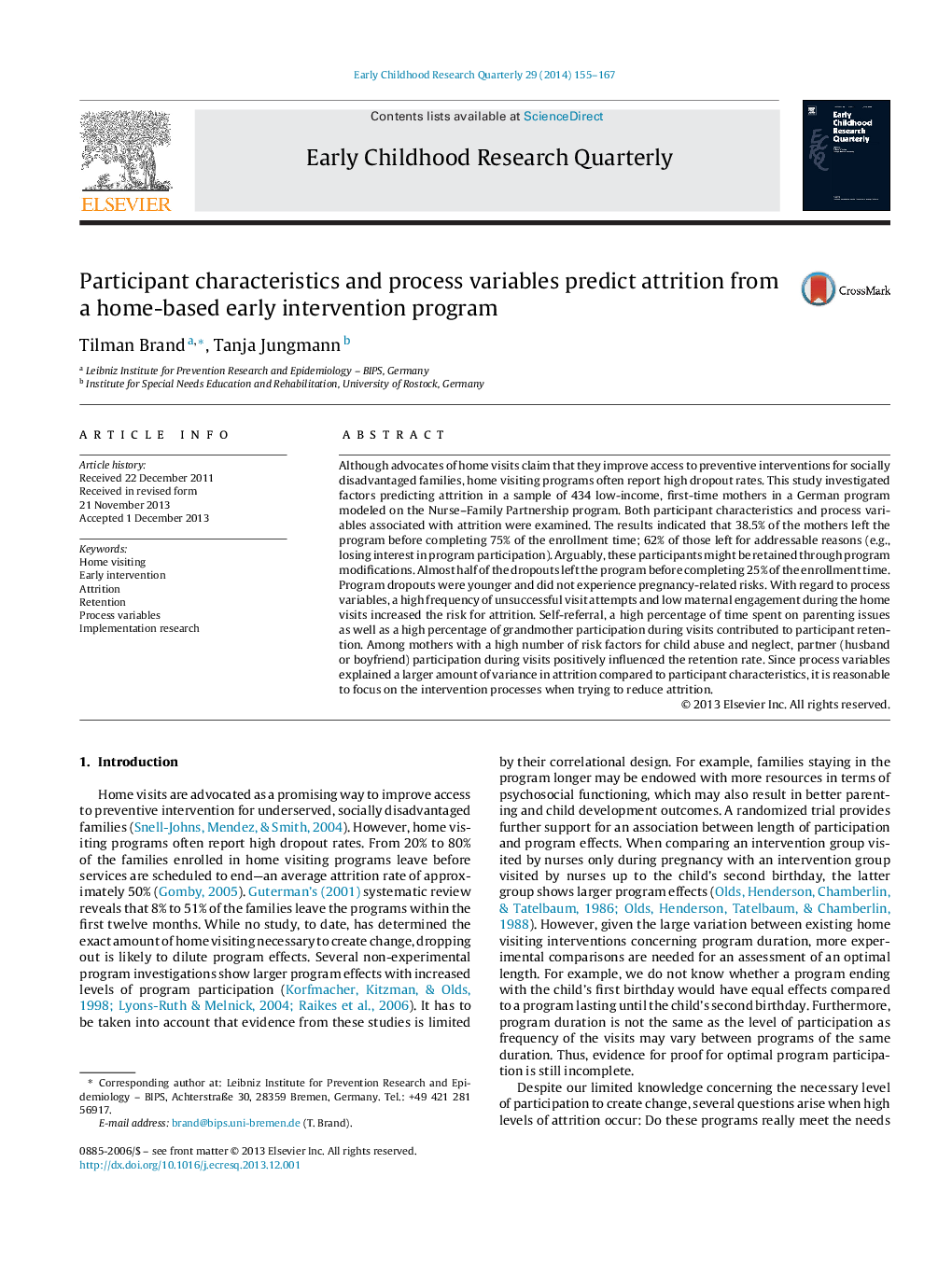| کد مقاله | کد نشریه | سال انتشار | مقاله انگلیسی | نسخه تمام متن |
|---|---|---|---|---|
| 353905 | 618952 | 2014 | 13 صفحه PDF | دانلود رایگان |
• We analyzed predictors for attrition in a home visiting program.
• Overall, 38.5% of the mother left the program prematurely.
• Younger mothers dropped out more often.
• Frequent participation of the grandmother contributed to retention.
• More time devoted to parenting made attrition less likely.
Although advocates of home visits claim that they improve access to preventive interventions for socially disadvantaged families, home visiting programs often report high dropout rates. This study investigated factors predicting attrition in a sample of 434 low-income, first-time mothers in a German program modeled on the Nurse–Family Partnership program. Both participant characteristics and process variables associated with attrition were examined. The results indicated that 38.5% of the mothers left the program before completing 75% of the enrollment time; 62% of those left for addressable reasons (e.g., losing interest in program participation). Arguably, these participants might be retained through program modifications. Almost half of the dropouts left the program before completing 25% of the enrollment time. Program dropouts were younger and did not experience pregnancy-related risks. With regard to process variables, a high frequency of unsuccessful visit attempts and low maternal engagement during the home visits increased the risk for attrition. Self-referral, a high percentage of time spent on parenting issues as well as a high percentage of grandmother participation during visits contributed to participant retention. Among mothers with a high number of risk factors for child abuse and neglect, partner (husband or boyfriend) participation during visits positively influenced the retention rate. Since process variables explained a larger amount of variance in attrition compared to participant characteristics, it is reasonable to focus on the intervention processes when trying to reduce attrition.
Journal: Early Childhood Research Quarterly - Volume 29, Issue 2, 2nd Quarter 2014, Pages 155–167
